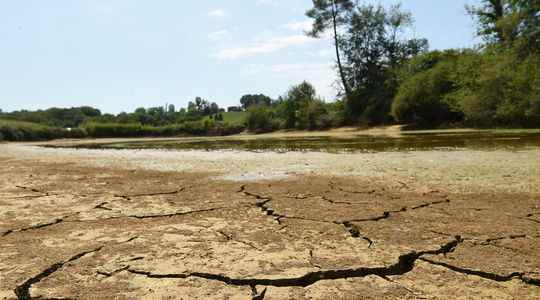Saturday August 13, on the site of Météo France, a sentence attracts attention: “Tomorrow Sunday, an almost generalized stormy deterioration should mark the end of the heat wave”. After the terrible month of July, during which less than a centimeter of water fell in mainland France, mid-August promises – finally – a respite for the dry soils.
But this excess of enthusiasm was quickly dampened by specialists, both from the National Forestry Office and from Météo France. The ONF is however impatiently awaiting the rain, as it could help firefighters fight the fires that are currently ravaging France. “The intensity of the fires is such that it would take torrential rains to weaken them,” tempers the regional office of Aix-en-Provence to L’Express. “Besides, several departments are on storm alert and not rain,” he adds. Accuracy is indeed important. Some areas could see lightning without large amounts of water. Thus, the appearance of the “first natural cause of fire”, according to the referent fires of Météo-France, Romaric Cinotti, would only accentuate the disaster in progress.
Dry soil does not retain water
Nevertheless, rain will fall, and even a lot, especially around the Massif Central and the Rhône Valley, with an accumulation of precipitation that can reach up to 50 millimeters. On dry ground, isn’t that too much all at once? The British University of Reading has, in an educational video shared on Twitter, shown the absorption capacities of three different soils: wet, normal and dry. The experience is striking: the last city simply cannot “drink” the water that reaches it. In addition, the vegetation, which participates in water retention, is absent. If heavy rain falls on these soils this Sunday, large quantities of water will flow, causing runoff and raising fears of flooding.
At least, these rains could participate in attenuating the current episode of drought ? Again, disappointment prevails. “The rain deficit observed since the beginning of the hydrological year, that is to say since September, is too great for a single episode of precipitation to fill the water tables”, underlines to L’Express the hydrologist Fabienne Lagarde. “Especially since it won’t rain everywhere,” she continues.
Compared to normal, the deficit is, depending on the region, 10 to 50%. The only solution therefore lies in the regularity of the rains. On Twitter, Serge Zakadoctor in Agroclimatology at ITK, a climate modeling company on agriculture, abounds: “The rest? We must wait for the return of effective rains in autumn to recharge all the soil and groundwater. These next rains will stabilize drought” But the end of it “is not for now…”
